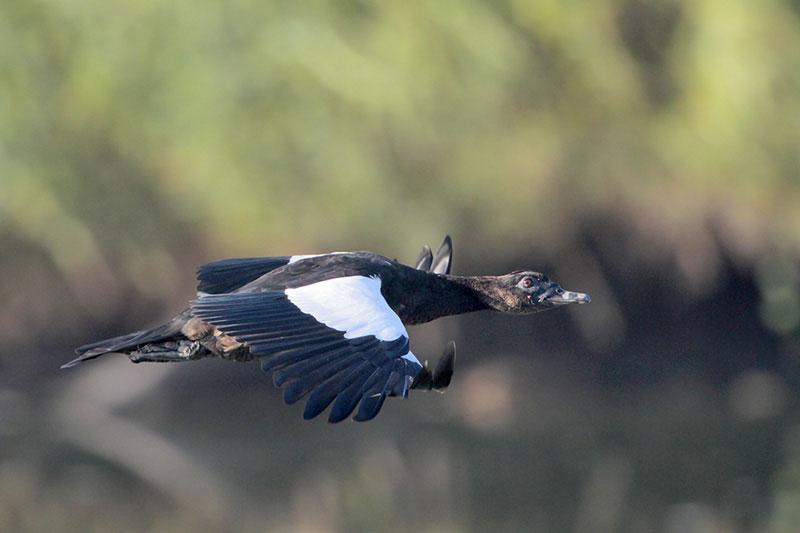
Ducks are beautiful and easy birds to watch!
In North America, we are lucky to have plenty of habitat for large numbers of waterfowl, especially in Louisiana. This state is a fantastic place to see ducks!
Have you ever watched ducks in Louisiana? We bet you’ve seen a lot of waterfowl in the state, but how many were you able to identify?
Most Common Louisiana Ducks
Based on eBird data, we sorted our findings into a list of ten of the most common ducks in Louisiana.
To help you identify them on the go, we included information about their habitats and behavior, as well as their key markers!
Black-bellied Whistling-Duck
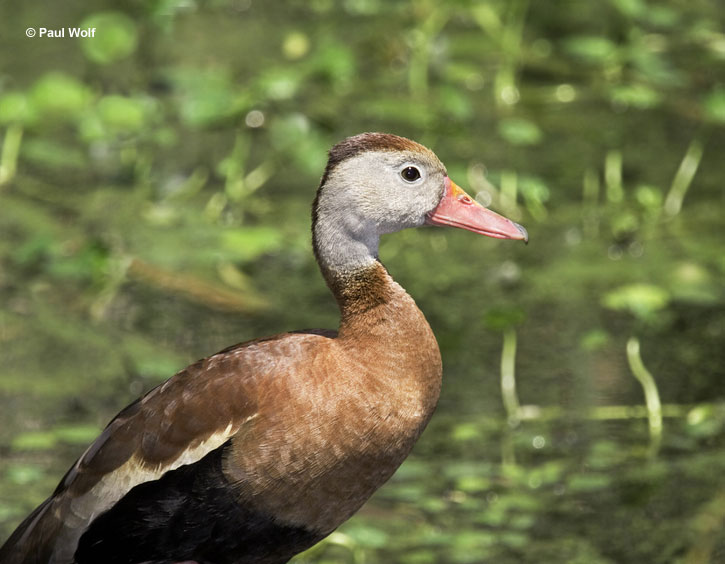
Scientific name: Dendrocygna autumnalis
Length: 21 inches
Wingspan: 30 inches
Black-bellied Whistling-Ducks are big waterfowl with long pink legs and a dark pink beak. If that sounds fancy, it’s true, they are bold and eye-catching birds!
Adults look similar and are chestnut-brown with a black belly and undertail, gray head, and bold white wing stripes. Juveniles have gray beaks and legs.
These ducks are very social birds that flock together in shallow wetlands and rice fields. On account of their tendency to perch in trees, this species and other whistling-ducks used to be known as “tree-ducks”.
However, since they are also very vocal and often make sharp, whistle-like calls, they are known as “whistling-ducks”.
This species likes to eat grains and other plant matter, and sometimes occurs in big groups. They are also active at night and nest in tree cavities as well as on the ground.
Key identifications:
- Big, goose-like duck with a big pink beak.
- Gray-brown bird with a black belly.
- Long legs, and dark wings with a bold white wing stripe.
Wood Duck
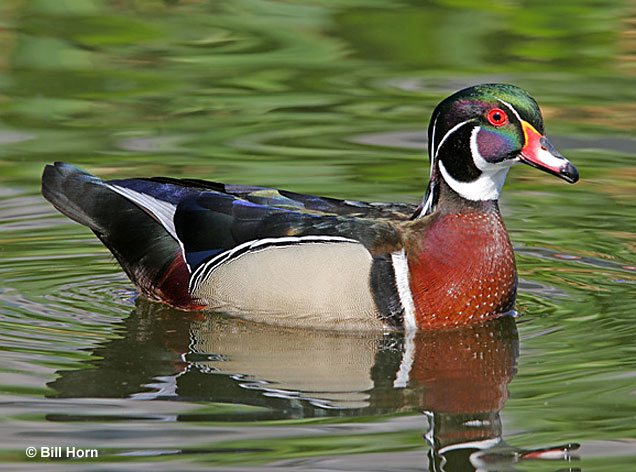
Scientific name: Aix sponsa
Length: 18.5 inches
Wingspan: 30 inches
Wood Ducks are seriously ornamental birds. The males can seem so exotic, it might be hard to believe they are a wild, native species! However, Wood Ducks are indeed native and fairly common in many parts of southern Canada and the USA.
These cute, slender, long-tailed ducks prefer wooded swamps and other wetlands in forested habitats. The males have a rounded head with a dark green crest, black and white face, short red beak, and jade green back. They also have bright buff flanks and a chestnut chest and undertail.
Female Wood Ducks grayish-brown birds that aren’t nearly as fancy but can still be recognized by their blocky head, white spectacles, slender shape, and mostly dark wings.
Wood Ducks usually occur in pairs but can also form small flocks that forage for acorns, plant matter, and small creatures in and near water. We often hear these ducks give their odd, squealing whistle vocalization before we see them.
Key identifications:
- Slender duck with a longish tail and a blocky head.
- Ornate plumage a short, reddish beak.
- Dark wings with a narrow white line on the base of the trailing edge.
Mallard
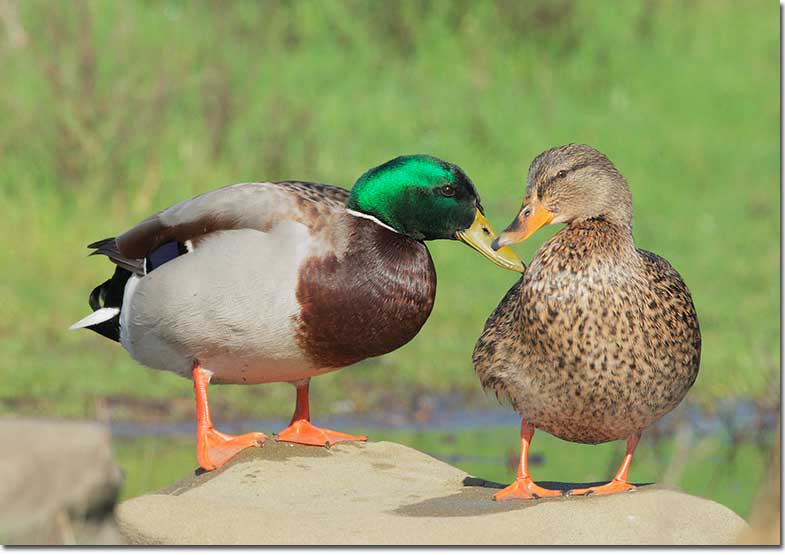
Scientific name: Anas platyrhynchos
Length: 23 inches
Wingspan: 35 inches
Mallards are the most familiar duck species. For lots of folks, this is “the duck”. They have been domesticated for centuries and lots of them are fed at urban ponds and lakes.
However, make no doubt about it, Mallards are wild birds that also live in lots of wild and remote areas in most of North America. The males have a dark green head, narrow white collar, yellowish beak, and dark brown chest.
Female Mallards, though, can be trickier to identify. They are brown with some paler brown and dark markings, and have a gray-brown neck and head with a dark cap, and a dark line through their eyes.
In flight, we can also recognize female Mallards by their pale tail, and two white wing bards bordering a green-blue wing patch.
In addition to eating bird food and vegetables, Mallards dabble in shallow water for plant matter and small creatures.
Key identifications:
- Big duck with a glossy green head and yellowish beak.
- The female has a dark center mark on her orange beak.
- Short, pale, or white tail.
Blue-winged Teal
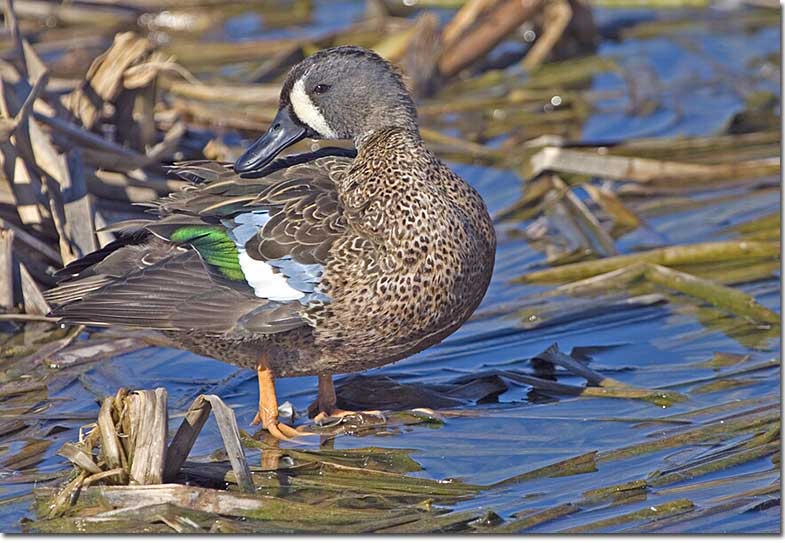
Scientific name: Spatula discors
Length: 15.5 inches
Wingspan: 23 inches
Blue-winged Teals are small ducks with brownish plumage and fairly big, dark beaks. In a lot of places, these little ducks are the commonest waterfowl species. They are also highly migratory and thousands can spend the winter as far south as Panama and northern Colombia!
Male Blue-winged Teals have dark gray heads and a bold white, crescent-shaped patch on their face. They also have a small white patch near their dark tail and a black undertail. Females are duller brown with buff and dark mottling to help hide them during the nesting season.
In flight, just like their name says, both sexes reveal big blue patches on their wings. Blue-winged Teals usually occur in flocks, and in some places, they can number in the thousands!
They like to dabble for plants and small creatures in rice fields, marshes, and other shallow water wetlands.
Key identifications:
- Small duck with a dark beak and white crescent mark on its face.
- Female has a dark line through her dark eyes.
- Blue or blue-gray shoulders on its wings.
Mottled Duck
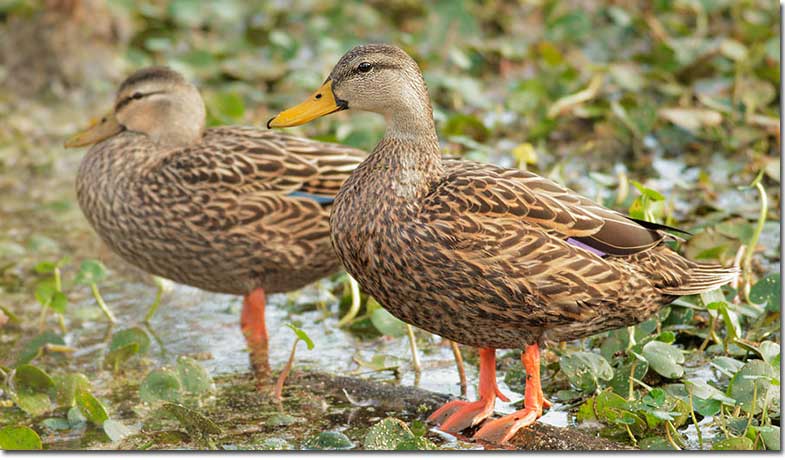
Scientific name: Anas fluvigula
Length: 22 inches
Wingspan: 30 inches
Mottled Ducks are hefty, dark brown ducks with a much paler, buff neck and head. They also have a dark line through each of their dark eyes, buff and dark brown markings on their body, and orange legs. Both sexes look pretty similar except that males have a brighter yellow beak, and females are sometimes paler.
In brief, they are one of the plainer looking duck species in North America. However, although they might not look as pretty as some other birds, the Mottled Duck is pretty special! This waterfowl species has a very small range and only occurs in Florida, Louisiana, and Texas.
These cool birds dabble for plants and small creatures in coastal marshes and other shallow wetlands. We usually see them in pairs but, after breeding, they can flock together and feed in farm fields.
Key identifications:
- Hefty brown duck with a plan buff throat.
- Plain olive or orange-yellow beak.
- Orange legs and wings that are mostly dark above, mostly white below.
Lesser Scaup
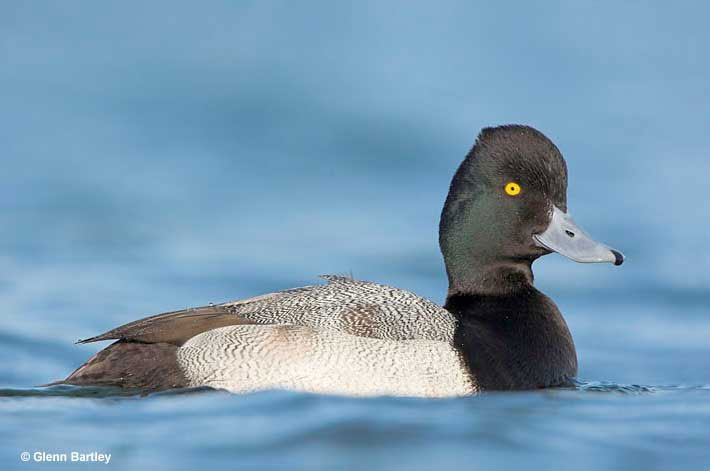
Scientific name: Aythya affinis
Length: 16.5 inches
Wingspan: 25 inches
Lesser Scaups are smallish or medium-sized diving ducks with a blue-gray beak. Males have a black head with dark green highlights, black chest, and black rear end, pale gray back, and white sides and belly.
Female Lesser Scaups are dark brown with a pale belly, and a white mark on their face. Both sexes have the back part of the head more pointed than the front part. That field mark might not sound like much but it’s one of the best ways to tell them from the extremely similar Greater Scaup!
Lesser Scaups dive to forage in lakes, reservoirs, and coastal bays for mollusks, crustaceans, and other aquatic creatures. In migration and winter, they often occur in flocks that can number in the hundreds!
Key identifications:
- Bluish beak.
- Slightly peaked on the back part of its head.
- Male has black chest, gray body, and dark head, female has a white mark on the front of her face.
Northern Shoveler
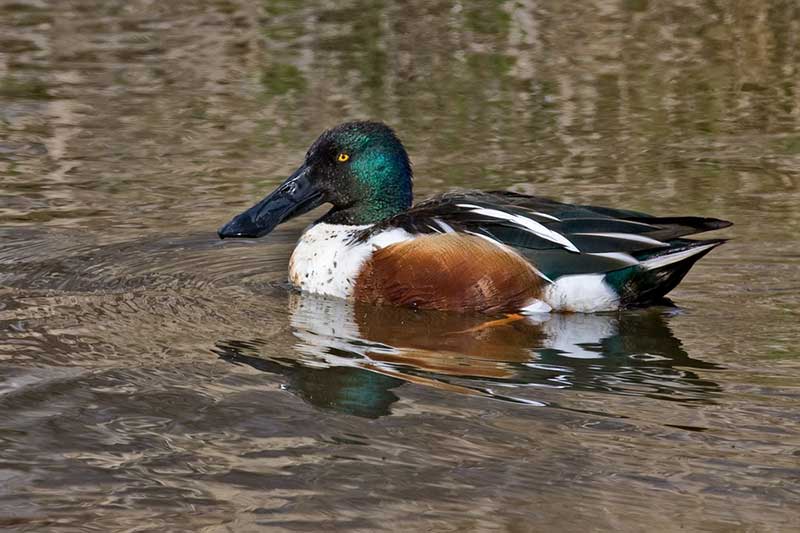
Scientific name: Spatula clypeata
Length: 19 inches
Wingspan: 30 inches
Northern Shovelers are a distinctive duck species with a big, prominent beak. Males have striking plumage with a dark green head, and white and chestnut underparts. They are also white and gray on their back, have orange legs, and show blue shoulders in flight.
Female Northern Shovelers are tawny-brown ducks with lots of buff markings, and an orange and gray beak. Both sexes also have a pale tail.
These pretty ducks like to float in marshes and other shallow wetland habitats. They often form flocks and we can see them foraging with Blue-winged Teals and other dabbling ducks. Like many other duck species, Northern Shovelers feed on a combination of plant matter and small aquatic creatures.
This species breeds in shallow wetlands in Alaska, western and central Canada, and in parts of the northern and western USA. They migrate to coastal marshes and much of the southern USA for the winter, so Louisiana is no exception.
Key identifications:
- Over-sized, flat beak.
- Male has a white breast, red-brown sides and belly, and dark green head.
- Female has a pale tail and orange and gray beak.
Gadwall
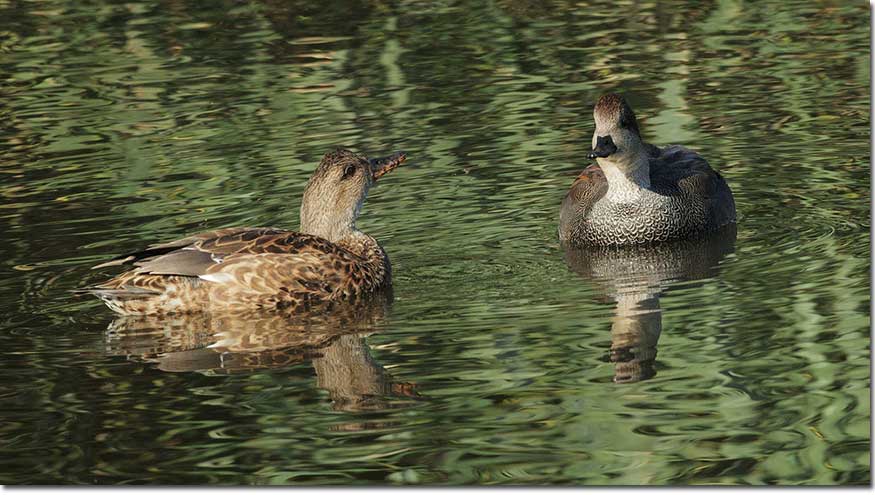
Scientific name: Mareca strepera
Length: 20 inches
Wingspan: 33 inches
Gadwalls are medium-sized ducks with a small white patch on the base of each wing. Males are gray ducks with a paler grayish head, some brown feathers on their wings, and a black rump, tail, and undertail.
Female Gadwalls look a lot like female Mallards and have gray-brown plumage with buff markings, and a paler grayish head. Like hen Mallards, they also have an orange and black beak but it is mostly gray on the upper part of the bill.
In flight, both sexes show white bellies, the small white mark on their wing, and much white on their underwings.
Gadwalls forage for seeds and other plant matter in and near shallow water.
These ducks breed in shallow wetlands in northern areas but arrive in Louisiana for winter.
Key identifications:
- Male is mostly gray with black rear end.
- Female has grayish head and gray and orange beak.
- Small white patch on base of wing.
Muscovy Duck
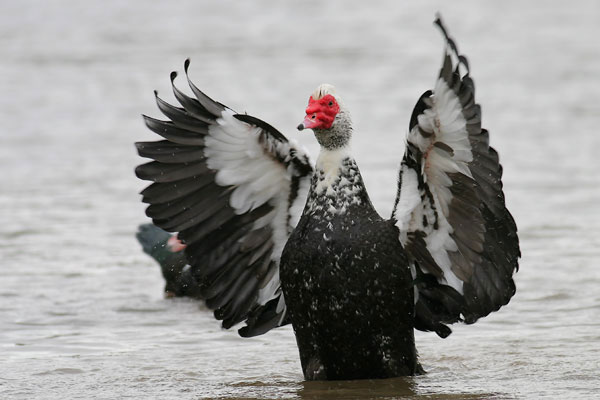
Scientific name: Cairina moschata
Length: 25 inches
Wingspan: 48 inches
Muscovy Ducks are heavy and hefty, goose-like ducks with dark plumage. They have a little bit of a crest, a longish, broad tail, and big, broad wings. When we see these big birds in flight, their wings show prominent, bold white patches.
Muscovy Ducks also have a bicolored beak, and often have some red, warty growths on their face! With a closer look, we can see that the black plumage of this duck species actually has dark green highlights.
The Muscovy Duck likes to perch in trees and float around ponds and other shallow wetlands, especially in wooded areas. They forage for plants and other small animals and are a common farm bird.
Indeed, most of the tame Muscovy Ducks we see in Louisiana and other places are basically domesticated Muscovy Ducks. The wild ones don’t have any white patches in their plumage except for on their wings, are shyer, and occur in southern Texas.
Key identifications:
- Big, dark, goose-like duck.
- Mostly black with dark green highlights.
- Broad dark wings with white markings.
Ring-necked Duck
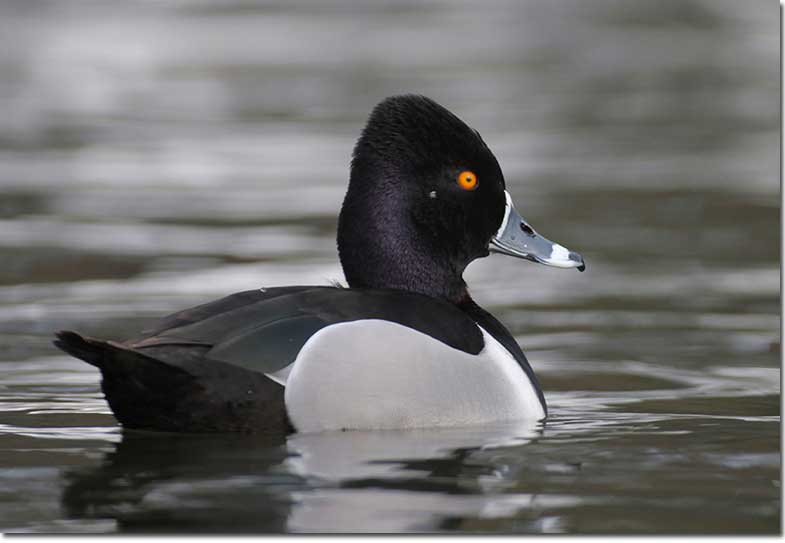
Scientific name: Aythya collaris
Length: 17 inches
Wingspan: 25 inches
Ring-necked Ducks are one of those birds that don’t have the best of names. While males do have a brown ring on their necks, it blends in with their black neck and can be really hard to see.
In reality, Ring-necked Ducks should really be called Ring-billed Ducks! The males are best recognized by the white ring near the black tip of their dark gray beak, and their combination of a black back, head, neck, and chest. They also have gray sides and a white mark near their black chest.
Female Ring-necked Ducks are plain, brownish birds with pale bellies and narrow white spectacles on a grayish face. They also show a bit of white on their face, near the base of their bill.
Ring-necked Ducks dabble and make shallow dives for a variety of food items. They like to eat plant matter, insects, and other small aquatic creatures. We find them in a variety of shallow wetlands in much of North America.
Key identifications:
- Male has black back, head, and chest.
- Gray sides with white near the black chest.
- Female has narrow white spectacles on gray face.
Frequently Asked Questions
How many ducks are in Louisiana?
There are a lot of ducks in Louisiana. In total, 31 duck species have been found in the state!
What is the most common duck species in Louisiana?
The most common duck species in Louisiana is the Black-bellied Whistling-Duck. According to eBird, they are seen more than any other duck in the state.
How many duck species can be found year-round in Louisiana?
In Louisiana, four or five duck species can be found year-round.
Read next: Most common birds in Louisiana | Hawks in Louisiana

